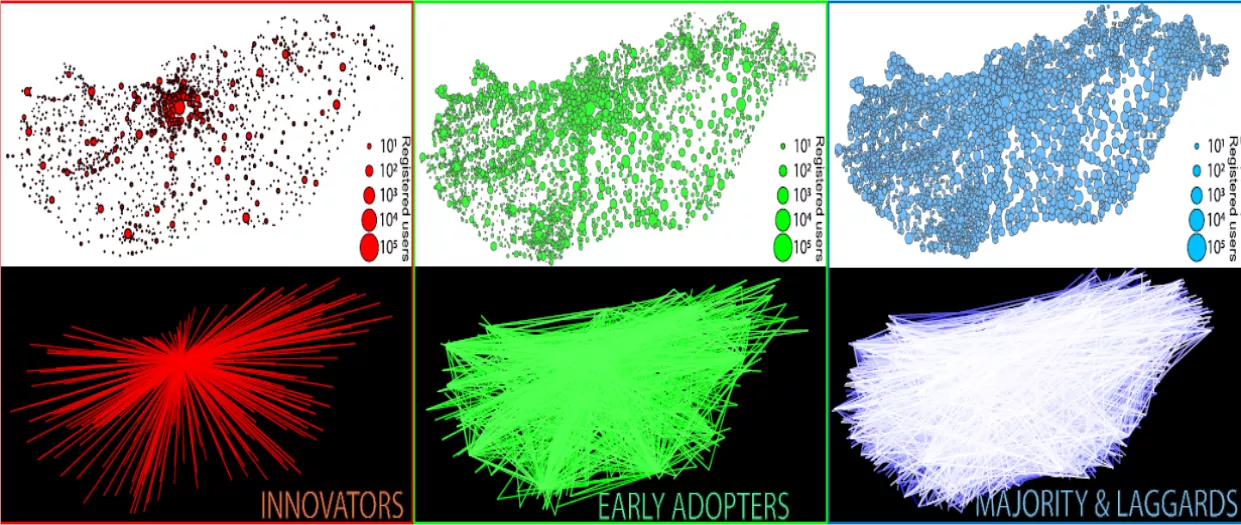The article by Balázs Lengyel, senior researcher at ELKH KRTK KTI and head of Agglomeration and Social Networks Lendület Research Group, and his Hungarian and international co-authors, examines the role of geography in the spread of innovations. The research not only highlights that telecommunication-based marketing tools are not omnipotent, but a new tool has also been developed to predict the spread of innovation in different regions of the country.

In the world of the internet and social media, popular ideas are spreading virally. When a person shares a picture or quote, their friends are seeing it virtually in real time. This has created the misconception that internet marketing campaigns can treat people anywhere in the world in a uniform way. Research highlights that telecommunications-based marketing tools are not omnipotent. The geographical characteristics of residence basically determine whether the state-of-the-art models of spread – based on relationships in social media – are able to predict the use of a new product. Researchers have developed a new tool that allows marketers to accurately estimate when the spread of innovative products is accelerating or peaking, even when focusing on individual cities.
According to one of the most accepted views, the adaptive behavior of individuals is shaped by the individual characteristics of the search for novelty and the social pressures of their environment – through networks of relationships. However, this model ignores the geographical location of individuals. It is important to better understand the spatial diffusion of innovation on social networks, as we can gain new insights into the relationship between technological and economic development in addition to the dissemination of information.
In this work, the spatial adaption dynamics of iWiW, a Hungarian online social network, has been analyzed. It is revealed that the adaption of innovation follows a power-law function of the urban population, which reveals a strong concentration of early adaption in large cities and less concentrated late adaption. It is also shown that during the life cycle of iWiW, distance played an increasing role in diffusion. The spread initially happened between large cities at great distances, later it became more and more local described by short distances. The special feature of the database allows researchers to quantify social pressure on adaption, which can be measured by the proportion of friends already adapted. The article also reveals that by introducing this proportion into the model, the network diffusion model better reflects the metropolitan concentration of early adaption and also provides a better estimate of the time of adoption peaks in towns.
Lengyel, B., Bokányi, E., Di Clemente, R., Kertész, J., González M.C. The role of geography in the complex diffusion of innovations. Scientific Reports 10, 15065 (2020). https://www.nature.com/articles/s41598-020-72137-w